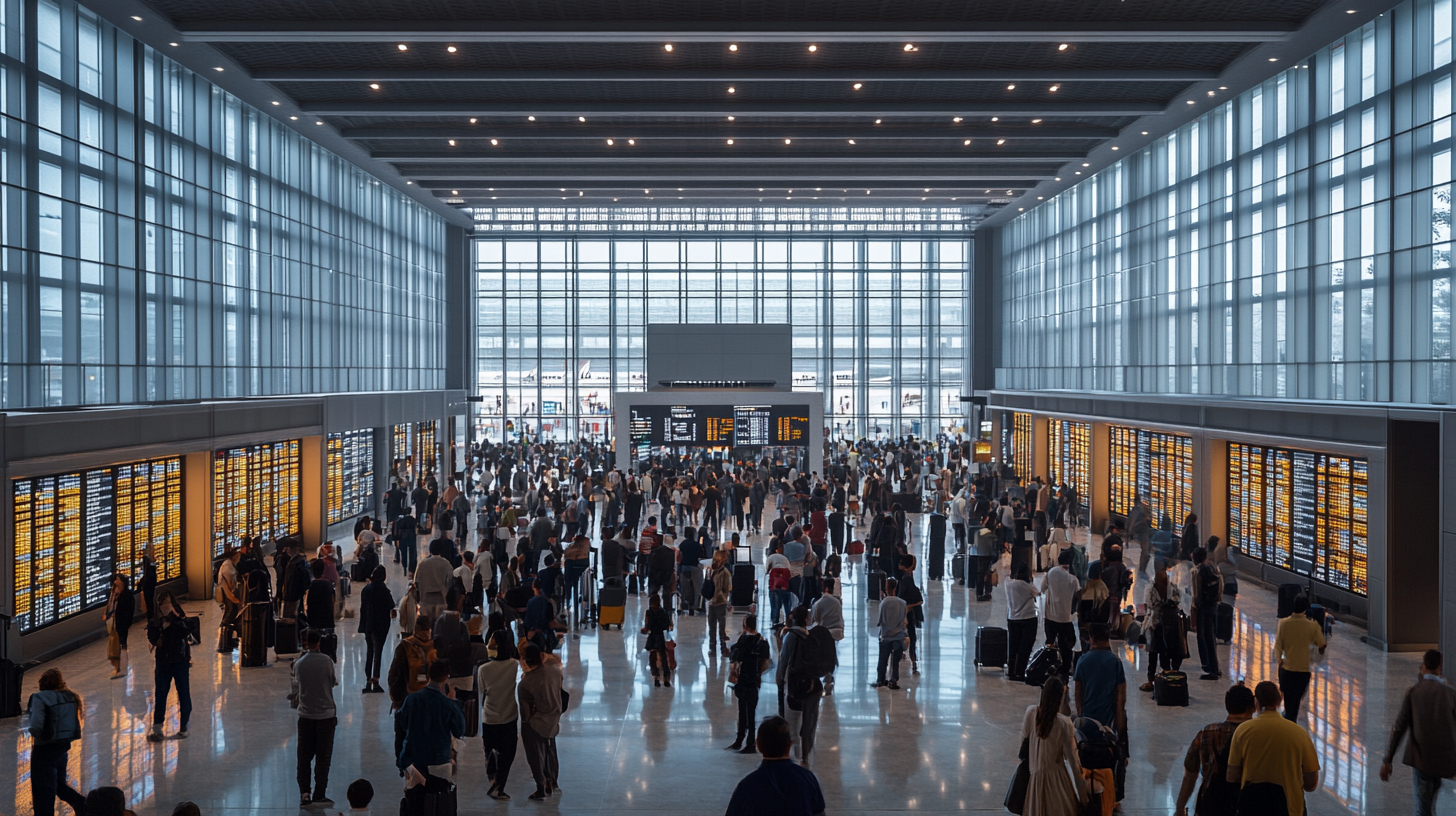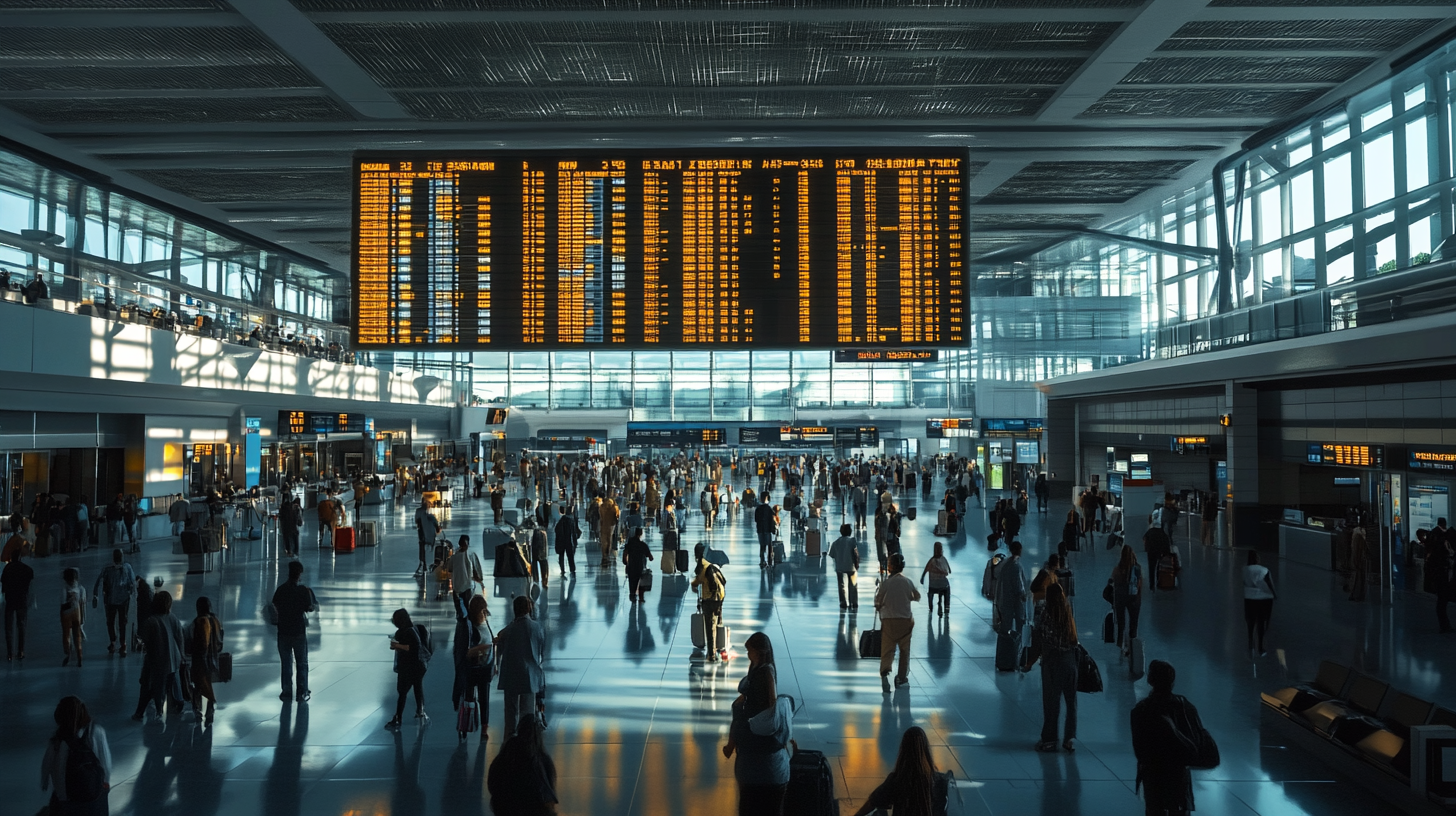The Best Time to Book Domestic Flights: Debunking Myths and Unveiling Strategies for Savings

In the ever-changing landscape of air travel, finding the best time to book domestic flights can feel like navigating a maze. Consider Sarah, a seasoned traveler who booked a flight months in advance only to find the price dropped significantly closer to the departure date. Meanwhile, her friend Jake waited too long and ended up paying double for the same route. With fluctuating prices and a myriad of advice flooding the internet, it’s essential to separate fact from fiction to secure the best deals. This comprehensive guide delves into current insights and strategies, unraveling the complexities of flight booking, to help you make informed decisions and save on your next domestic trip.
The Myth of the “Best Day” to Book Flights

For years, travelers have clung to the belief that booking flights on Tuesdays would yield the cheapest fares. This notion dates back to when airlines traditionally released weekly sales late on Monday nights, leading to lower prices on Tuesdays. However, this practice has evolved over time. Recent analyses indicate that there’s no conclusive evidence to support the idea that any particular day consistently offers lower prices.
According to studies, Expedia suggests that Sundays may offer some savings, especially when booking 60 days before travel. This trend might be due to airlines targeting leisure travelers who typically book on weekends. However, Google reports little to no price advantage linked to specific booking days. The bottom line? Focusing solely on the day of the week might not be the most effective strategy for finding the lowest fares. Instead, utilizing comprehensive strategies—as discussed in expert tips on finding affordable flights —may prove more beneficial to budget-conscious travelers.
Understanding the Optimal Booking Window

The Goldilocks Window: Not Too Early, Not Too Late

Timing is crucial when booking flights. Experts often refer to the “Goldilocks Window”—a period that’s not too far in advance but not too close to the departure date. This window is considered “just right” for grabbing the best deals. For domestic flights, this window typically falls between 1 to 3 months before your trip.
Booking too early can mean missing out on potential sales and discounts that airlines release closer to the departure date. On the other hand, waiting until the last minute often leads to higher prices due to limited seat availability and increased demand. Some findings specify that the optimal time to book domestic flights is around 28 days prior to departure. Another source suggests that the cheapest fares are found when booking between 21 to 52 days in advance. The consensus is clear: booking within this time frame increases your chances of securing better deals.
For instance, imagine planning a trip in June. Booking your flight in March or early April places you squarely within the Goldilocks Window, balancing potential savings with the security of having your travel plans confirmed. By understanding and utilizing this optimal booking period, travelers can avoid the pitfalls of fluctuating prices and secure the best possible fares. To further refine your booking strategy, consider consulting comprehensive analysis of airfare trends , which delves into the factors influencing these optimal booking windows.
Booking in Advance for International and Peak Season Travel

While the focus here is on domestic flights, it’s worth noting that international travel requires more lead time due to factors such as limited flight options and higher demand. Booking 3 to 5 months ahead is advisable for international trips to secure better pricing and preferred seats. During peak seasons like summer vacations or major holidays, experts recommend securing tickets 3 to 7 months in advance to avoid inflated prices caused by the surge in travelers.
For example, travelers planning to spend the holidays abroad should start monitoring fares as early as mid-year. Airlines often anticipate increased demand during these periods and adjust prices accordingly. By booking well in advance, you not only save money but also gain peace of mind, knowing that your travel arrangements are set. For deeper insights into planning for peak travel seasons, refer to strategies for booking peak season flights , which offers expert advice on navigating the challenges of high-demand periods.
Tools and Strategies for Securing the Best Deals

Utilize Price Alerts and Flight Tracking Tools

In today’s digital age, several tools can aid in monitoring flight prices, making the process more manageable and less time-consuming. Platforms like Google Flights and other fare-tracking websites allow you to set up alerts that notify you of price drops or changes. By entering your desired destinations and travel dates, these tools continuously monitor fares and send updates directly to your email or mobile device. By keeping a vigilant eye on fare fluctuations, you can seize opportunities as soon as they arise, ensuring you don’t miss out on potential savings.
For instance, setting up a price alert for a flight from New York to Los Angeles might reveal a significant price drop that lasts only a few hours. Without the alert, you might have missed this fleeting deal. Consistently using these tools increases your chances of booking flights at the most advantageous times. For a detailed comparison of popular flight tracking tools, check out comprehensive review of flight monitoring platforms , which evaluates features and user experiences to help you choose the best option.
Embrace Flexibility: The Key to Savings

Being flexible with your travel dates and times can significantly impact the cost of your flights. Airlines adjust prices based on demand, and flights during less popular times are often cheaper. Midweek flights, particularly on Tuesdays and Wednesdays, often come with lower price tags due to reduced demand from business travelers and weekend vacationers. Additionally, opting for early morning flights or red-eye flights can sometimes result in additional savings, as these times are less desirable for many travelers.
For example, choosing a departure date on a Wednesday instead of a Friday could reduce your airfare by a considerable margin. Similarly, flying out at 6 a.m. might not be ideal for those who prefer to sleep in, but the cost savings could make the early wake-up call worthwhile. To explore how date flexibility affects pricing, consider using tools that offer fare calendars, as detailed in guide to using fare calendars for flight savings . These resources can help visualize price variations across different dates, allowing you to choose the most cost-effective options.
The “Flight First Rule”

An effective strategy for budget-conscious travelers is the “Flight First Rule.” This approach involves booking a cheap flight as soon as you find one and then planning the rest of your trip around it. By prioritizing the flight booking, you capitalize on low fares before they disappear, rather than adjusting your travel dates to fit other plans. This method may require flexibility with your itinerary, but the potential savings can be significant.
For example, if you stumble upon an exceptionally low fare to your desired destination for traveling a week earlier than planned, booking that flight first allows you to arrange accommodations and activities accordingly. This strategy flips the traditional planning process, focusing on flight deals as the foundation of your trip. For more on how to implement this approach effectively, refer to detailed strategy for the Flight First Rule , which outlines steps to maximize your travel savings.
Seasonal Considerations and Holiday Travel

Plan Ahead for Holidays and Peak Seasons

Airfare prices tend to soar during holiday periods and popular travel seasons due to increased demand. Destinations that are popular during the summer or holiday months can see prices escalate rapidly as the dates approach. To mitigate this, it’s crucial to book early. Experts suggest that October is the optimal month to book flights for holiday travel, ensuring you secure seats before the rush. For spring break or summer vacations, start monitoring fares several months in advance to snag the best deals and avoid the last-minute price hikes.
For instance, families planning a July beach vacation should consider booking flights as early as January or February. Early booking not only locks in a better price but also offers a wider selection of flight times and seat options. To understand the nuances of seasonal pricing, see comprehensive guide to seasonal airfare trends , which provides insights into how different times of the year affect flight costs.
Additional Tips to Maximize Savings

Avoid Last-Minute Bookings

Procrastination can be costly in the realm of air travel. Last-minute bookings generally come with higher prices due to increased demand and limited seat availability. Airlines capitalize on the urgency of last-minute travelers, often increasing fares as the departure date approaches. To avoid unnecessary expenses, it’s advisable to plan your travel well in advance and secure your flights during the optimal booking window. This approach not only saves money but also reduces the stress associated with scrambling for flights at the eleventh hour.
For example, a traveler booking a domestic flight one week before departure might find that prices have doubled compared to fares available a month earlier. By understanding this pricing dynamic, travelers can avoid these pitfalls and keep their budgets intact. For advice on planning ahead, consult strategies for avoiding last-minute airfare surges , which offers practical tips to help you stay ahead of price increases.
Consider Fare Types Carefully

While basic economy fares may appear tempting due to their low upfront cost, they often come with significant restrictions, such as non-refundable tickets, no seat selection, and additional fees for baggage. Choosing standard economy or fares that allow ticket adjustments can be advantageous in the long run. If the price drops after booking, flexible fare options may enable you to rebook at the lower rate without incurring hefty change fees. This flexibility can result in overall savings that outweigh the initial cost difference.
For example, paying a slightly higher fare for a ticket that allows changes can provide peace of mind and financial benefits if travel plans shift or better deals emerge. Understanding the terms and conditions of your fare type is crucial in making an informed decision. For a detailed comparison of fare types and their implications, refer to comprehensive comparison of airline fare classes , which breaks down the benefits and limitations of each option.
Monitor and Adapt to Price Changes

Airfare pricing is highly volatile, fluctuating based on factors like demand, seasonality, and market conditions. Regularly monitoring prices and being prepared to act when favorable fares appear is essential in securing the best deals. Airlines may adjust prices several times a day, and a fare that seems high in the morning could drop by the afternoon. Utilizing price alerts and checking fares frequently can keep you informed of these changes.
Remember the 24-hour rule: many airlines allow free cancellations within 24 hours of booking, providing a safety net if you find a better deal shortly after purchasing a ticket. This policy can be a valuable tool, allowing you to lock in a fare while continuing to search for lower prices.
For instance, if you book a flight and later that day discover a cheaper option, the 24-hour cancellation policy enables you to cancel the original booking and rebook at the lower fare without penalty. To understand airline cancellation policies in depth, see guide to airline 24-hour cancellation rules , which outlines the specifics of this regulation across different carriers.
Final Thoughts

Securing the best deals on domestic flights involves a combination of strategic planning, flexibility, and timely action. By dismissing outdated myths about booking days and focusing on the optimal booking windows, travelers can significantly enhance their chances of finding affordable fares. Understanding the importance of the Goldilocks Window, being open to adjusting travel dates, and utilizing effective strategies like the Flight First Rule are all part of a savvy traveler’s toolkit.
Leveraging tools like price alerts, embracing flexibility in travel plans, and understanding the nuances of airfare pricing equip you with the knowledge to navigate the complexities of flight booking. Staying informed about factors that influence prices, such as seasonality and demand, allows you to anticipate changes and act accordingly.
Follow us back to Seat 5A for more insights and tips. As you plan your next domestic trip, keep these insights in mind to maximize savings and ensure a smooth journey.






